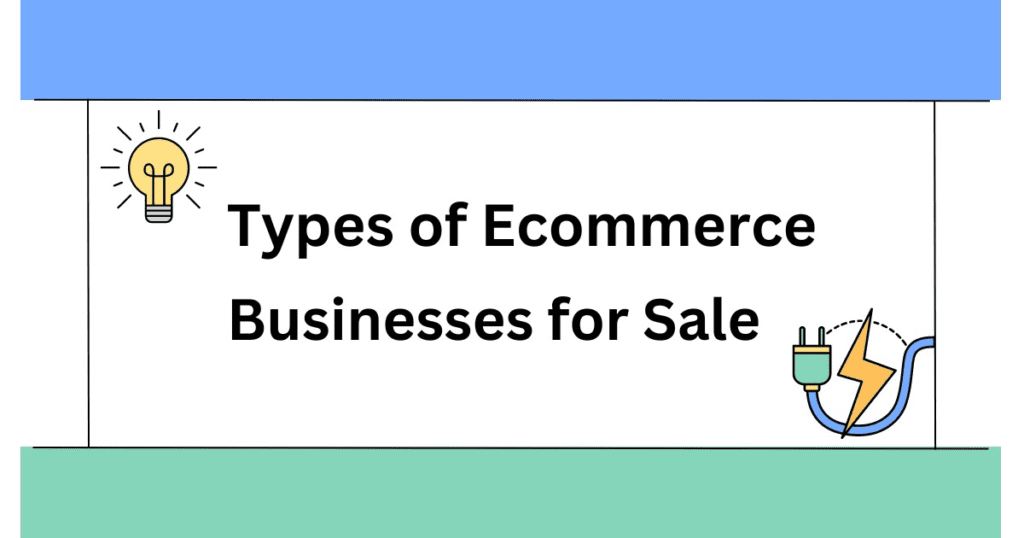The ecommerce market in the USA is booming, presenting numerous opportunities for entrepreneurs looking to buy an existing online business. Whether you’re a seasoned entrepreneur or a first-time buyer, understanding the key aspects of purchasing an ecommerce business is crucial. This guide will walk you through the essential topics to consider, ensuring a smooth and successful acquisition.
Introduction to Ecommerce Businesses
Ecommerce businesses involve selling products or services online, leveraging the internet’s vast reach. In the USA, the ecommerce market has seen exponential growth, driven by increasing internet penetration and changing consumer behaviors. From small niche stores to large marketplaces, ecommerce offers diverse opportunities for buyers.
Types of Ecommerce Businesses for Sale


When exploring ecommerce businesses for sale, you’ll encounter various models:
- Business-to-Consumer (B2C): Selling directly to individual customers.
- Business-to-Business (B2B): Providing products or services to other businesses.
- Consumer-to-Consumer (C2C): Facilitating transactions between consumers, often through a third-party platform.
- Consumer-to-Business (C2B): Consumers selling products or services to businesses.
- Dropshipping vs. Inventory-Based Models: Dropshipping involves selling products without holding inventory, while inventory-based models require managing stock.
Understanding these models helps in identifying the right business that aligns with your interests and expertise.
Evaluating an Ecommerce Business for Sale
A thorough evaluation is essential to make an informed decision. Key areas to consider include:
- Financial Metrics: Assess revenue, profit margins, and cash flow to determine the business’s financial health.
- Customer Base and Traffic: Analyze website traffic, customer demographics, and retention rates.
- Product Range and Supplier Relationships: Evaluate the variety of products offered and the reliability of suppliers.
- Brand Reputation and Online Presence: Check reviews, social media presence, and overall brand reputation.
A detailed evaluation ensures you invest in a viable and profitable business.
Legal Considerations and Due Diligence
Navigating legal aspects is crucial to avoid future complications. Key points include:
- Business Licenses and Permits: Ensure the business has all necessary licenses and permits.
- Intellectual Property and Trademarks: Verify ownership of intellectual property and trademarks.
- Contracts and Agreements: Review supplier, employee, and service agreements.
- Potential Liabilities and Compliance Issues: Identify any outstanding liabilities or regulatory issues.
Conducting thorough due diligence minimizes risks and ensures a smooth transition.
Financing the Purchase of an Ecommerce Business
Securing financing is a critical step. Consider the following:
- Funding Options: Explore personal savings, business loans, or investors.
- Preparing a Business Plan: A detailed business plan helps in securing financing by showcasing the business’s potential.
- Negotiating Price and Payment Terms: Negotiate a fair purchase price and favorable payment terms.
- Understanding Valuation Methods: Familiarize yourself with common valuation methods to ensure you’re paying a fair price.
Proper financing ensures you can afford the purchase without jeopardizing your financial stability.
Transitioning Ownership
Smooth ownership transition is key to maintaining business continuity. Steps include:
- Transfer of Business Assets and Accounts: Ensure all assets, including website domains and social media accounts, are transferred.
- Training and Support from Previous Owner: Arrange for training sessions and support from the seller.
- Continuity of Operations and Customer Relations: Maintain consistent operations and communicate with customers to ensure a seamless transition.
- Updating Legal and Financial Documents: Update all legal and financial documents to reflect the new ownership.
A well-managed transition helps retain customers and maintain business momentum.
Marketing and Growth Strategies Post-Acquisition
After acquiring the business, focus on growth strategies:


- Enhancing Digital Marketing Efforts: Invest in SEO, PPC, and social media marketing to drive traffic.
- Expanding Product Lines and Services: Introduce new products or services to attract more customers.
- Improving Customer Experience and Retention: Enhance the user experience and implement loyalty programs to retain customers.
- Exploring New Market Opportunities: Identify and tap into new markets to expand your reach.
Strategic marketing and growth initiatives are essential for long-term success.
Case Studies and Success Stories
Learning from successful acquisitions can provide valuable insights. Consider these examples:
- Example 1: A small niche ecommerce store acquired by a passionate entrepreneur who expanded the product range and tripled revenue within a year.
- Example 2: A large marketplace bought by an investor who leveraged digital marketing strategies to increase traffic and sales significantly.
- Lessons Learned and Best Practices: Common themes include the importance of thorough due diligence, effective marketing, and maintaining customer relationships.
These case studies highlight the potential of ecommerce businesses and offer practical tips for success.
Conclusion
Purchasing an ecommerce business in the USA is a lucrative opportunity, provided you approach it with thorough research and strategic planning. By understanding the different types of ecommerce models, evaluating the business comprehensively, navigating legalities, securing financing, managing the transition, and implementing growth strategies, you can achieve a successful acquisition. Learn from others’ experiences and be prepared to adapt and innovate in the dynamic ecommerce landscape.


